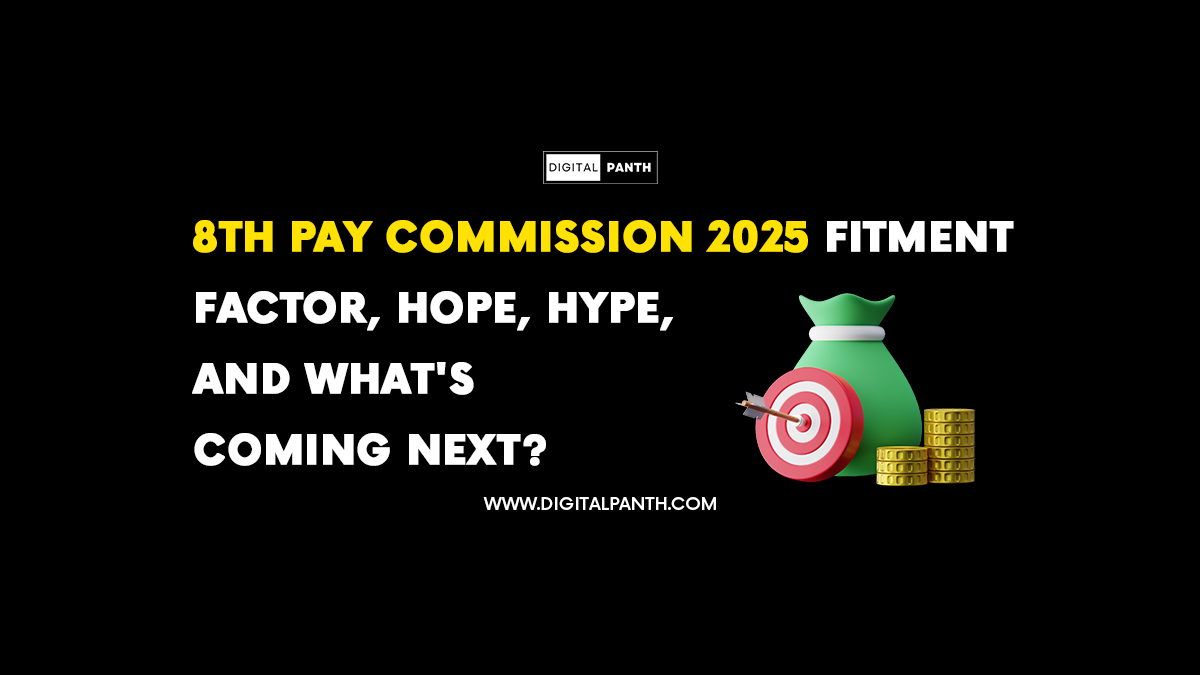As the calendar flipped to 2025, the 8th Pay Commission gathered serious momentum in the buzz of discussions, excitement, speculations, and sky-high expectations across India’s government workforce.
Every decade, a new Pay Commission gets set up, and the last one came out in 2016. Everybody is now waiting for what will be proposed through the 8th Pay Commission. The key reasons for the 8th Pay Commission are as follows:
- It concerns over one crore central and state government employees and pensioners.
- It governs wage levels, pensions, allowances, and benefits.
- It would also indirectly impact inflation, consumption, and economic sentiment across the country.
The Fitment Factor: The Core of the Hike
In January 2025, the Modi government announced that the 8th Pay Commission would be set up to decide salary and pension revision for over one crore central government employees and pensioners. The new pay panel may decide on a fitment factor between 2.57 and 2.86 since the fitment factor was 2.57.
The 7th Pay Commission was fixed at 2.57x. This means that the new salary was 2.57 times the old basic pay.
What Is Being Demanded Now?
All employee unions and federations demand a fitment factor of 3.68x, which may raise the minimum basic salary from ₹18,000 to around ₹26,000. This would rank among the most generous increases in recent Pay Commission history if accepted.
When Will the 8th Pay Commission Come Into Force?
- It has not yet been officially announced, as of May 2025.
- It is expected to be formally notified after the general elections.
- If passed, the implementation could commence in FY 2026–27, with a retrospective effect on the cards.
The Hope: What are employees thinking of?
After nearly a decade under the 7th Pay Commission structure, employees across the country are eagerly hoping for meaningful reforms and financial relief. The 8th Pay Commission represents more than just a pay hike; it recognises hard work, inflationary adjustment, and future security. The employees are hoping for:
- Fitment Factor 3.68x – With this, minimum basic pay could be enhanced from ₹18,000 to ₹26,000, thus improving take-home pay substantially.
- Immediate effect in 2025– People dream of an instant announcement and implementation, with the possibility of retrospective benefits from early 2025.
- Pension Revision – Retired employees feel that all pensioners should have a dignified pension and parity with present-day pay.
- DA Merger – A new base pay with DA merged into it would increase the fixed component through which one gets a higher raise in the future.
- Structural reforms – With allowances for digital tools, performance-based incentives, and many other things, the employees would love to see a fair structure that is technology-friendly.
The Hype: What the Buzz is Exaggerating?
Hope is powerful, but sadly, some expectations are grounded in reality. Here are some reasons where the hype might be overshooting:
- Full Pensions: This would necessitate a significant increase in pension payouts, something the government might struggle to manage all at once.
- Massive Allowance Overhaul: The adjustments in the pay structure cannot be changed overnight, as it depends on separate departmental reviews.
- “Confirmed” News on Social Media: Many viral posts have unverified claims about the dates, new pay matrix, and hike percentage. As of now, no official communication has been issued by the government of India.
The 8th Pay Commission: Timeline
As of May 2025, the Government of India has not declared the setting up of the 8th Central Pay Commission. But, increasing pressure from employee unions, public debate, and political parties have stirred the issue into limelight.
What’s Currently Expected?
Since general elections are on the cards, the possibility of any major fiscal announcement before the elections is low. There are, however, multiple reports and internal talks hinting that a formal announcement might be made post-elections, possibly by the new government in late 2025 or early 2026.
When Could the Implementation Start?
If approved and constituted in late 2025, 6-12 months would go into finalizing actual recommendations, thus shifting probable implementation to FY 26-27. There is also a possibility that the changed pay structure could be backdated to January 1, 2026.
What Could Change Beyond Salaries?
While the news regarding wage hikes usually takes the headlines, the 8th Pay Commission is expected to further streamline and modernise other areas related to public sector employment. Here are some of the structural reforms that the commission would probably recommend:
- New Pay Matrix & Grade Structure
Under the 7th CPC, the pay matrix may undergo further revisions:
- Decrease compression as we go down the hierarchy
- Give growth opportunities at all levels of the hierarchy
- Better align with evolving responsibilities in tech and policy-driven roles
- Performance-Promoting Incentives
The commission would probably emphasise merit annual increments and other rewarding incentives for employees who perform well across different departments of governments, while reducing over-reliance on seniority alone.
- Modern allowability changes
We could have:
- Allowances updated for digital tools and remote working
- Better hardship allowance for postings in rural, border, or high-altitude areas
- HRA slab revisions in line with the actual cost-of-living data of Tier 2 & Tier 3 cities
- Promotion-Streams & Skills-Based Growth
Promotion criteria may be changed in such a way as to:
- Focus on continuous training, certifications, and digital skills
- Fast-track promotions in deficient departments
- Get better alignment with organisational efficiency objectives
The reforms are intended to keep jobs desirable, accountable, and future-ready.
- Public Sentiment & The Politics
With inflation eating into common household budgets and with relief becoming the call of the hour from the middle class, the 8th Pay Commission is finding its space on the political grill.
Conclusion
The anticipation for the 8th Pay Commission highlights the hopes for improved finances for government employees, pensioners, and a fairer pay structure. While expectations of higher fitment factors and substantial salary hikes rise, it’s crucial to remain realistic.
Disclaimer: The views expressed in this blog are based on reports available to the public, prevailing expectations, and conjectures as of May 2025. Thus far, the Government of India has not issued any official circular regarding the 8th Pay Commission. Readers must confirm all updates with the official website before making any decisions.

